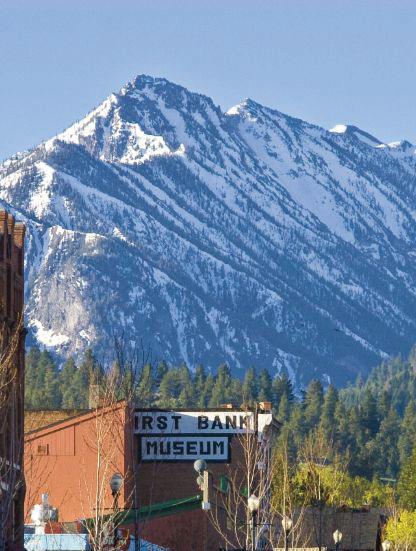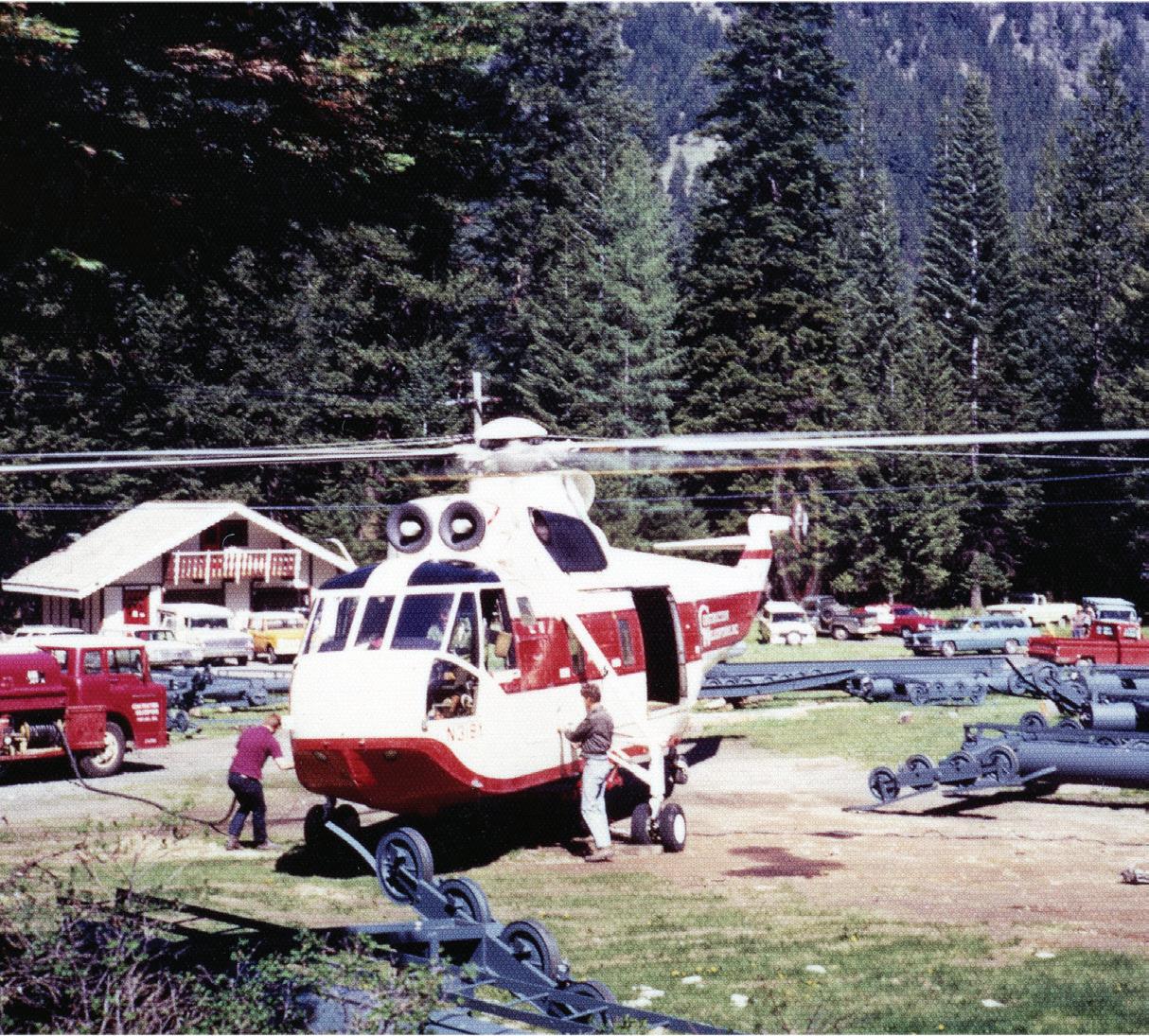
4 minute read
D iscover The East Moraine
Wallowa County’s most treasured landscape is now protected public land
Story and photos by Ellen Morris Bishop
The moraines that embrace Wallowa Lake are among the world’s most iconic landscapes. In January 2020, much of the charismatic East Moraine became the property of Wallowa County, and thus achieved long-sought protection from building and development. Today, the 1,800-acre former property of the Yanke family, along with 24 acres donated by the Oregon Parks and Recreation Department, comprises the 1824-acre East Moraine Community Forest, a place that will “be retained forever in a relatively natural state with the goal of maintaining natural, healthy and ecologically sustainable characteristics of range and forest habitats.”


It’s open to hikers, horseback riders, and other nonpowered uses, but closed to motorized vehicles, including electric ones. It’s also intended to become an exemplar of ecosystem restoration and sustainable natural resource management that will benefit all of Wallowa County. The East Moraine Community Forest Management Committee oversees that management. It consists of the Wallowa County Board of Commissioners, the Wallowa Land Trust, Wallowa Resources, the Oregon Parks and Recreation Department, the Oregon Department of Forestry, the Oregon Department of Fish and Wildlife, Oregon State University’s Extension Service and the Nez Perce Tribe.
The management plan for the East Moraine Community Forest was approved in September 2022 after a long period of public comment that was not without controversy. The plan’s goal is maintaining this landscape as a “relatively unaltered community treasure” with diverse habitats, longstanding cultural significance, recreational and educational opportunities, and for its “…returns to the economy as a working landscape.” A legally binding conservation easement, finalized in February 2023, explicitly outlines permitted and prohibited uses, including banning all commercial and residential development, providing an additional layer of protection for this landscape.
That means that cattle will still graze, and forests will yield occasional commercial harvest that benefits forest health. But native ecosystem vigor and diversity, wildlife habitat, restoration of grasslands, wetlands, and forests, and protection for species of concern should take precedence over economic gain in perpetuity.
Recreational opportunities on the property include hiking, birdwatching, pollinator-watching, and opportunities to simply soak-in the landscape’s sights, fragrances and sounds. The trails are relatively wide former logging and access roads. Maps of the trail “system” are displayed on large interpretive signs at each of the entrances, and users are asked to stay on trails. Dogs are allowed
Land management
but must be leashed at all times. This is especially important in the spring and early summer when mule deer fawns and other young wildlife are especially vulnerable and during summer, when livestock are present.
Trails wind through forests on the south and east sides of the moraine. There are 15 different types of forest here. They include relatively open stands dominated by Ponderosa pine —mostly at the north end of the forested area, where forest merges with grassland. Deeper into the forests, Douglas fir becomes the dominant tree, and the mixed conifer forests have varying proportions of Ponderosa pine, western larch, and grand fir. Lodgepole pine occurs only on the most southern, highest elevations portions of the East Moraine.
A hike north along the trail atop the moraine offers stunning views and a glimpse of native grassland’s glory.
The forest is generally in good condition, mostly open and growing well, with a mixture of century-old trees and younger ones, and an understory of native snowberry, ninebark, and oceanspray. A few plots need to be thinned and/or have ladder fuels removed. These include a 125-acre area that displays a serious problem common in forests today: too many trees, including a lot of smaller trees that would serve as highly flammable ladder fuel in the event of fire. The management plan calls for commercial thinning at some time in the future using restoration harvests. The work would remove the small, mostly grand fir ladder fuel, leave all western larch and ponderosa pine, and the best mature Douglas fir. Many of these trees are 150 years old. The plan, said forester Larry Nall, is to return the 125 acres to old growth forest condition.
Wildflowers
Restoration of the East Moraine’s forest to more natural conditions will include retaining snags and downed woody debris for wildlife habitat, forest productivity, and soil regeneration. Prescribed fire may also be introduced when safe and appropriate. Forest management includes partnership with the Nez Perce Tribe’s Forest and Fire Management and Cultural Resource programs, as well as other partners.
A hike north along the trail atop the moraine offers stunning views and a glimpse of native grassland’s glory. Although invasive plants have a foothold here, native bunchgrasses abound. Look for Great Basin wild rye, which can grow to more than 4 feet in height, bluebunch wheatgrass, a stately 2 feet tall, and smaller, feathery Idaho fescue, which prefers cooler, north and eastfacing slopes. Flowers include the tiny, early-blooming prairie star, the showstopping arrowleaf balsamroot that flowers in May. There’s also a scattering of Spalding’s catchfly, an endangered species that will be protected, monitored and restored. Overhead, watch for bald eagles and golden eagles, red tail hawks and rufous legged hawks. Meadowlarks and mountain bluebirds often perch on fenceposts and tall shrubs.
Wildlife is diverse. The East Moraine is an especially important habitat for elk and mule deer, whose populations are declining. More than 300 mule deer have been recorded wintering on the moraine — the highest concentration of mule deer known in Wallowa County. The moraine’s west face is designated as “sensitive big game winter range” and the top of the East Moraine is an important migration corridor.
The big boulders atop the moraine and along its sides are glacial erratics— carried here from the interior of the Wallowas by glaciers about 19,000 years ago. Most are “granite.” You’ll find a few dark, olive-drab erratics. They are greenstone, a metamorphosed basalt, about 230 million years old. Brown basalt erratics are smaller and rare. At the time the erratics were deposited, glacial ice towered as much as 100 feet above the top of the East Moraine.
During the four-month long grazing season, mid-June through October, you’ll find cattle on the moraine. The East Moraine Community Forest Plan calls for dividing the area into five pastures, with the numbers of cows and calves, and grazing rotations and rest, determined by range conditions,










